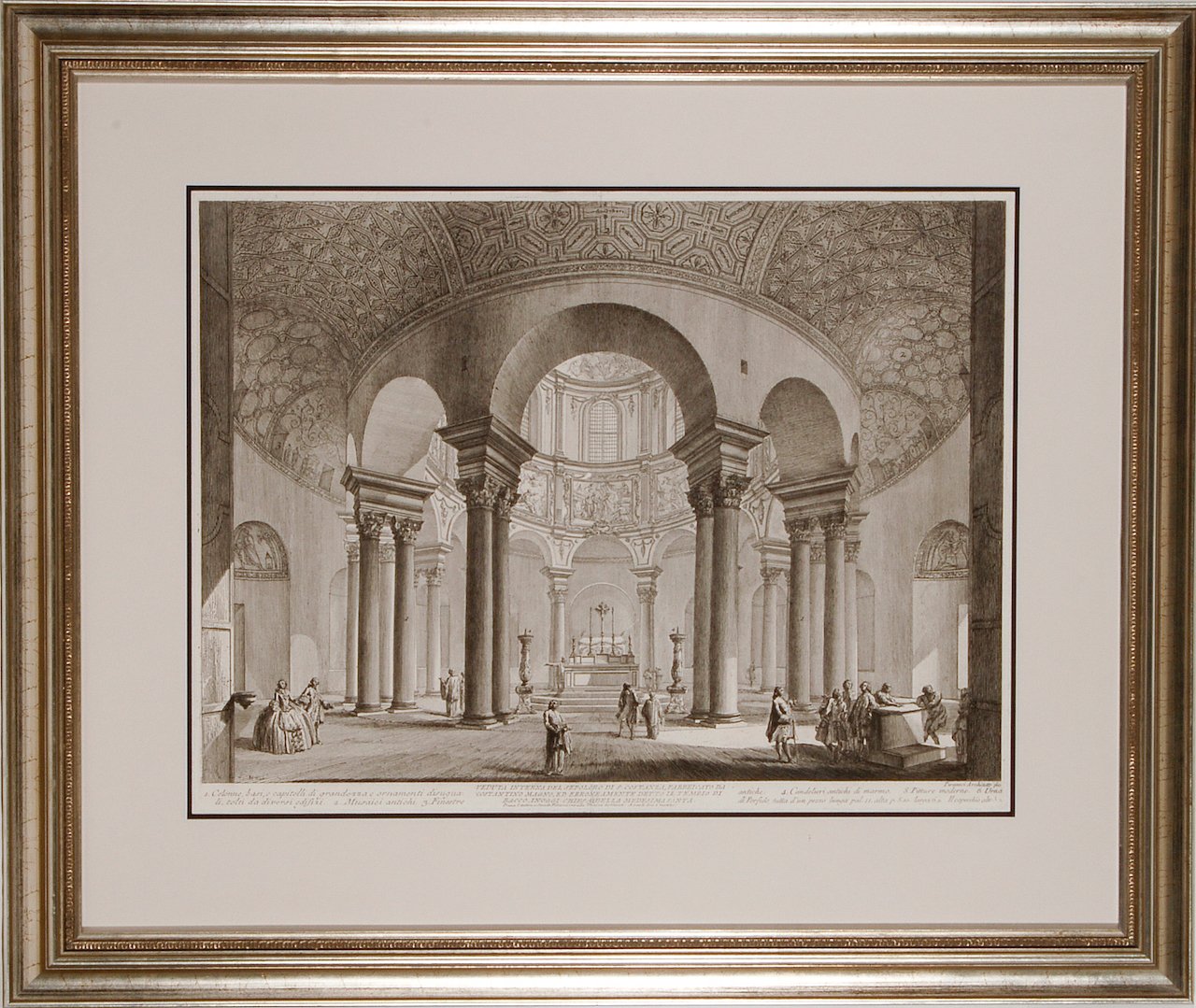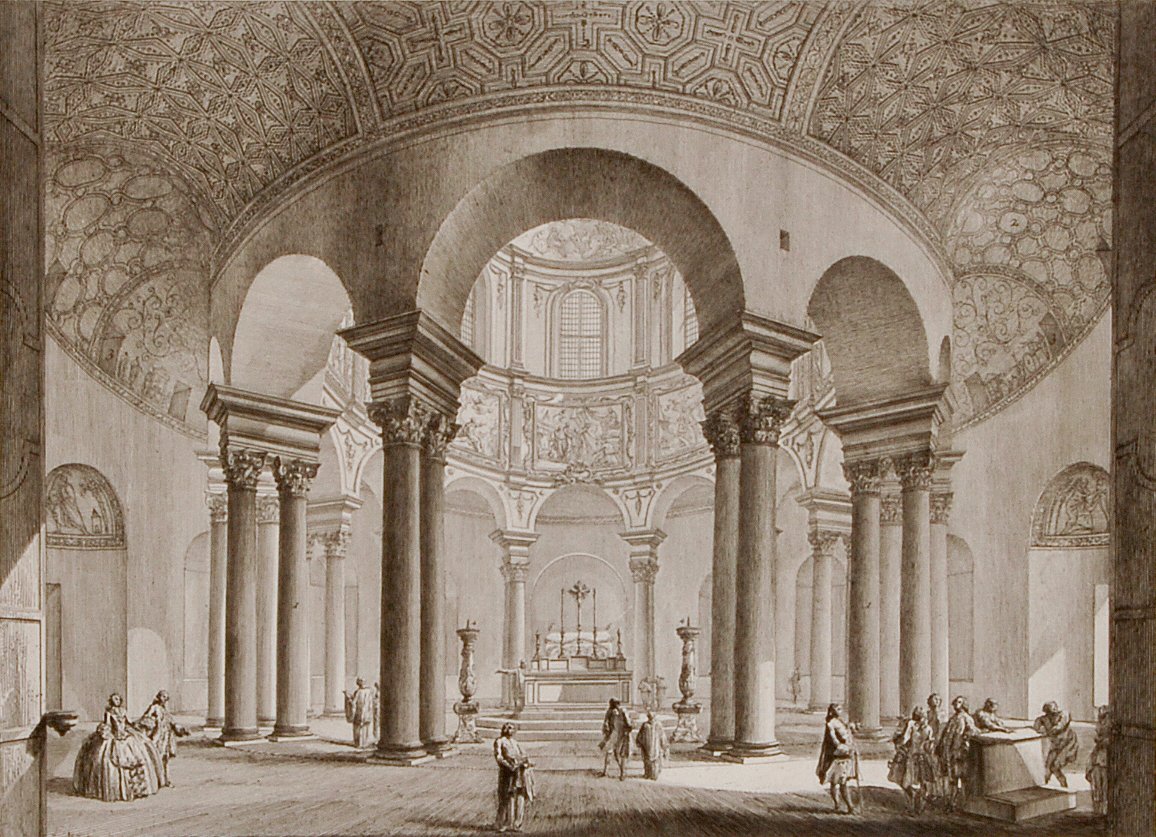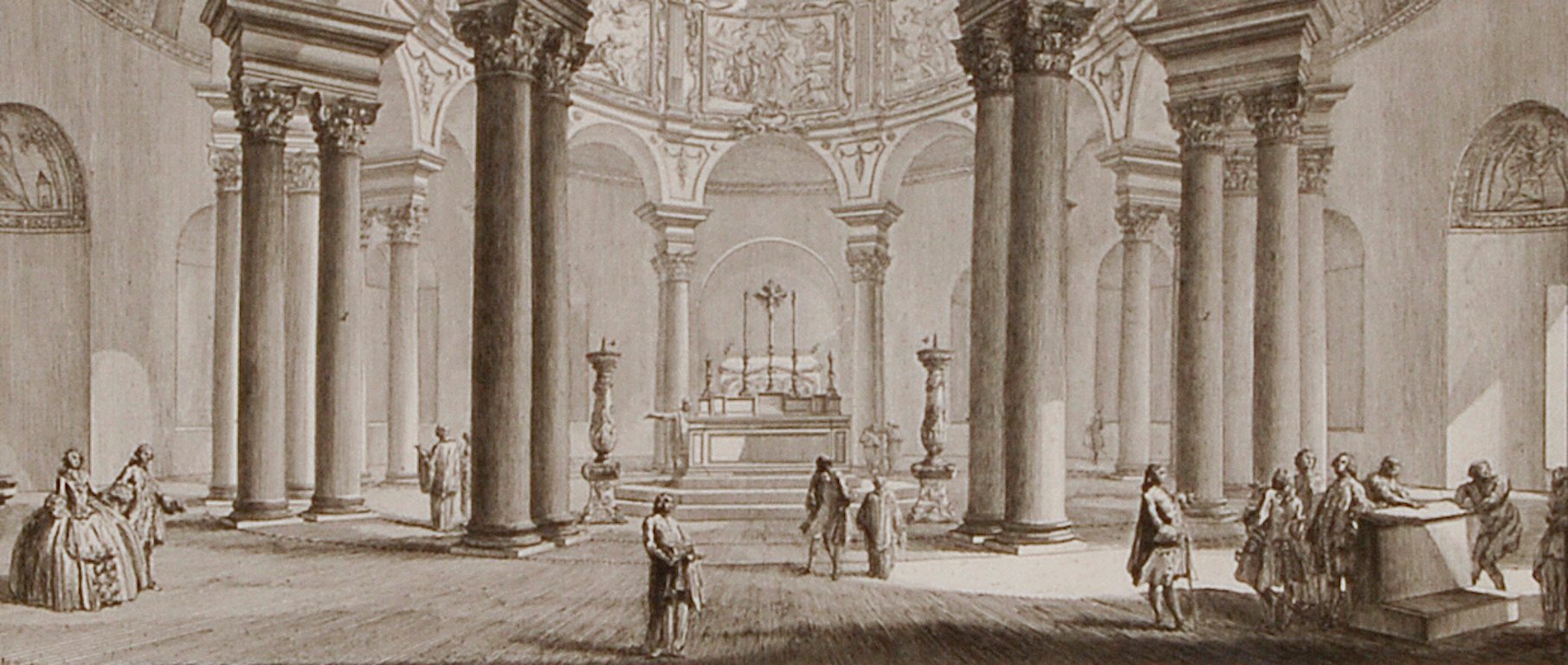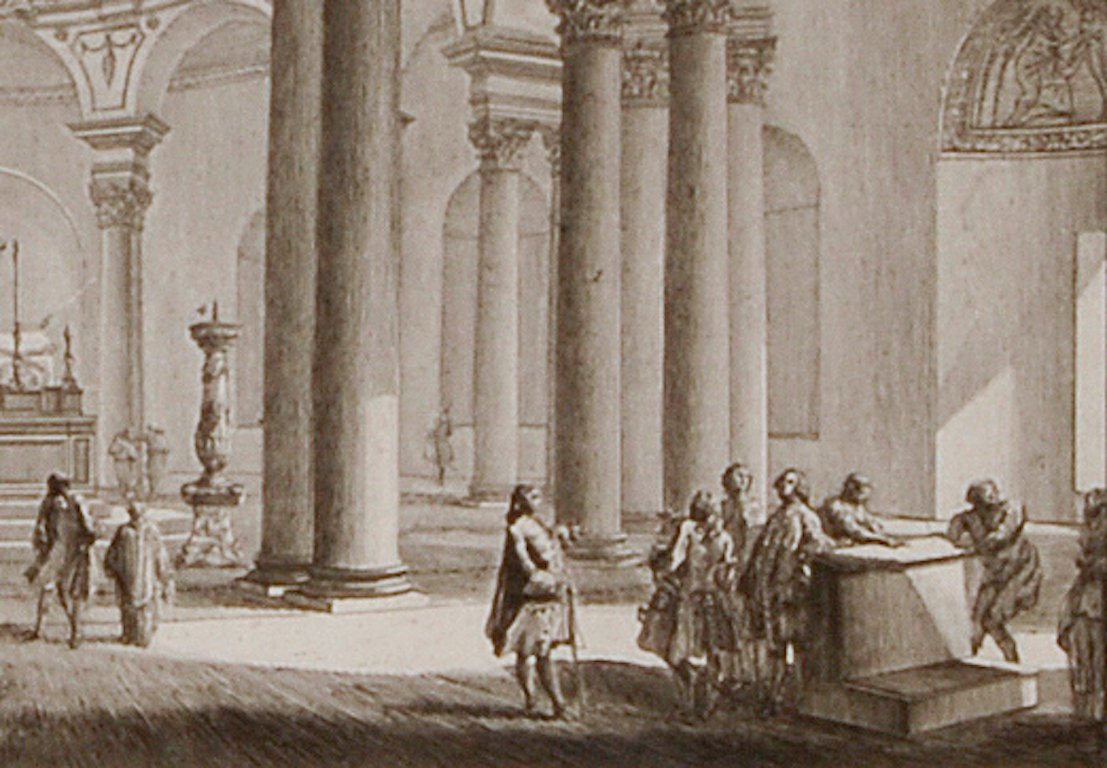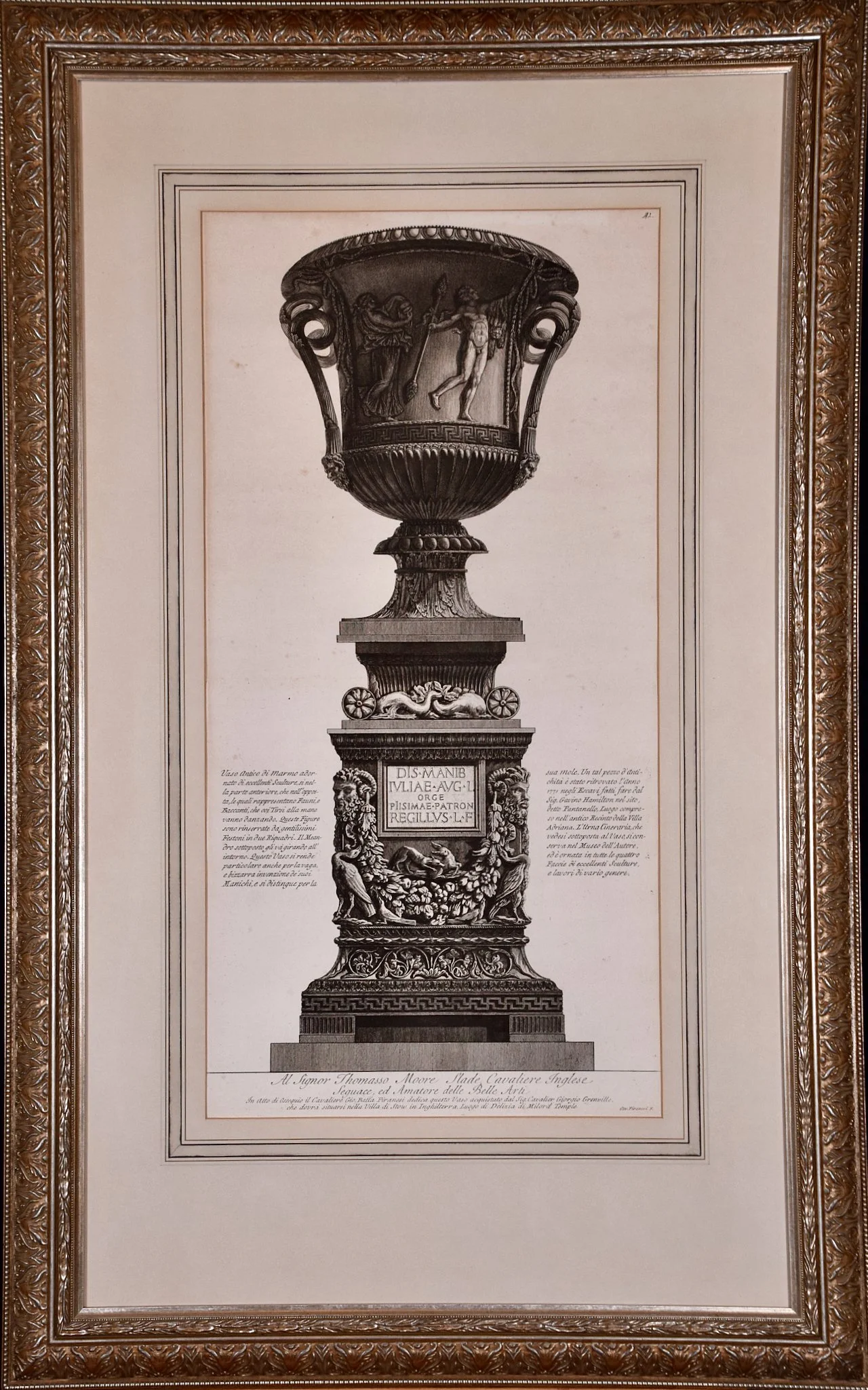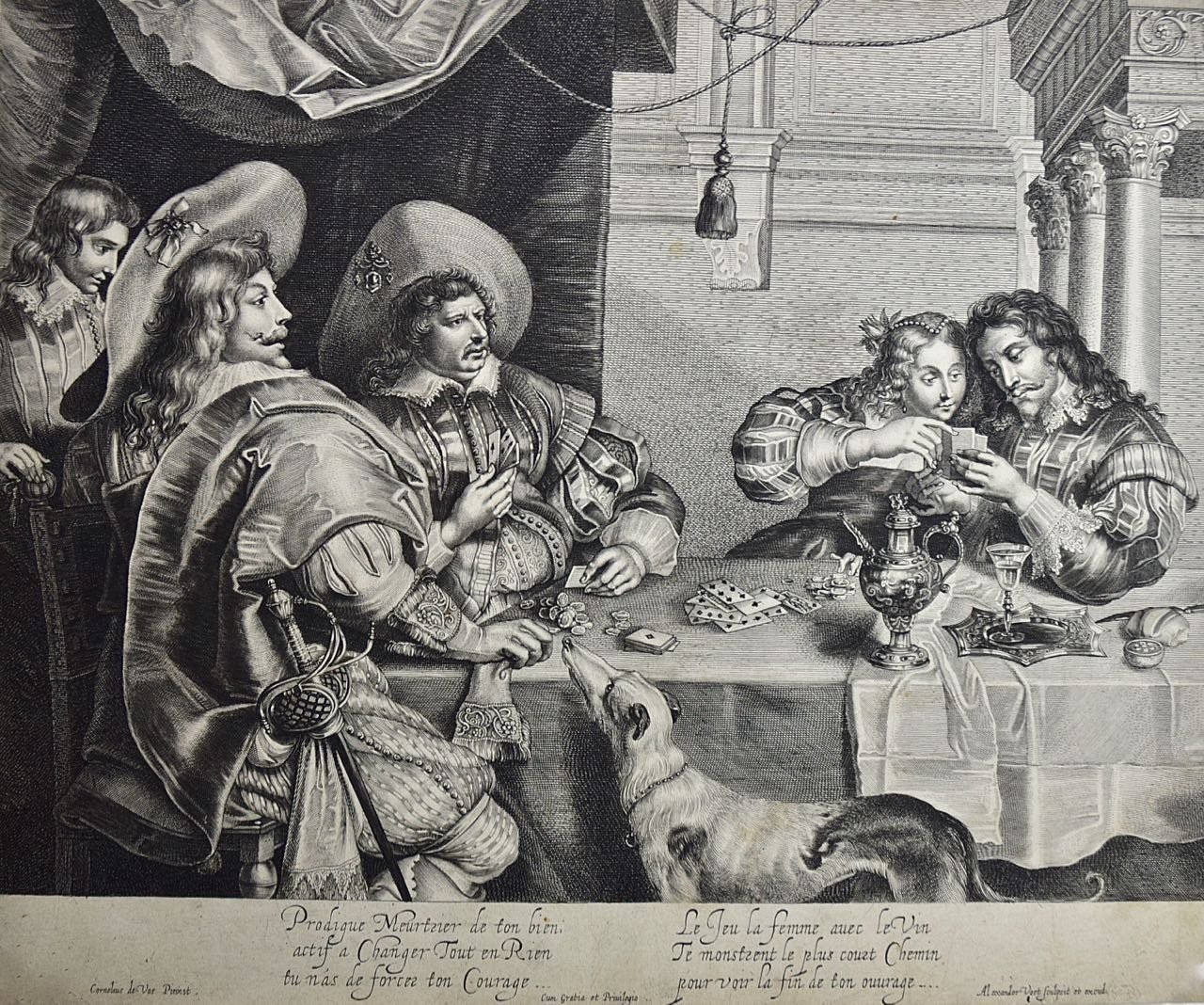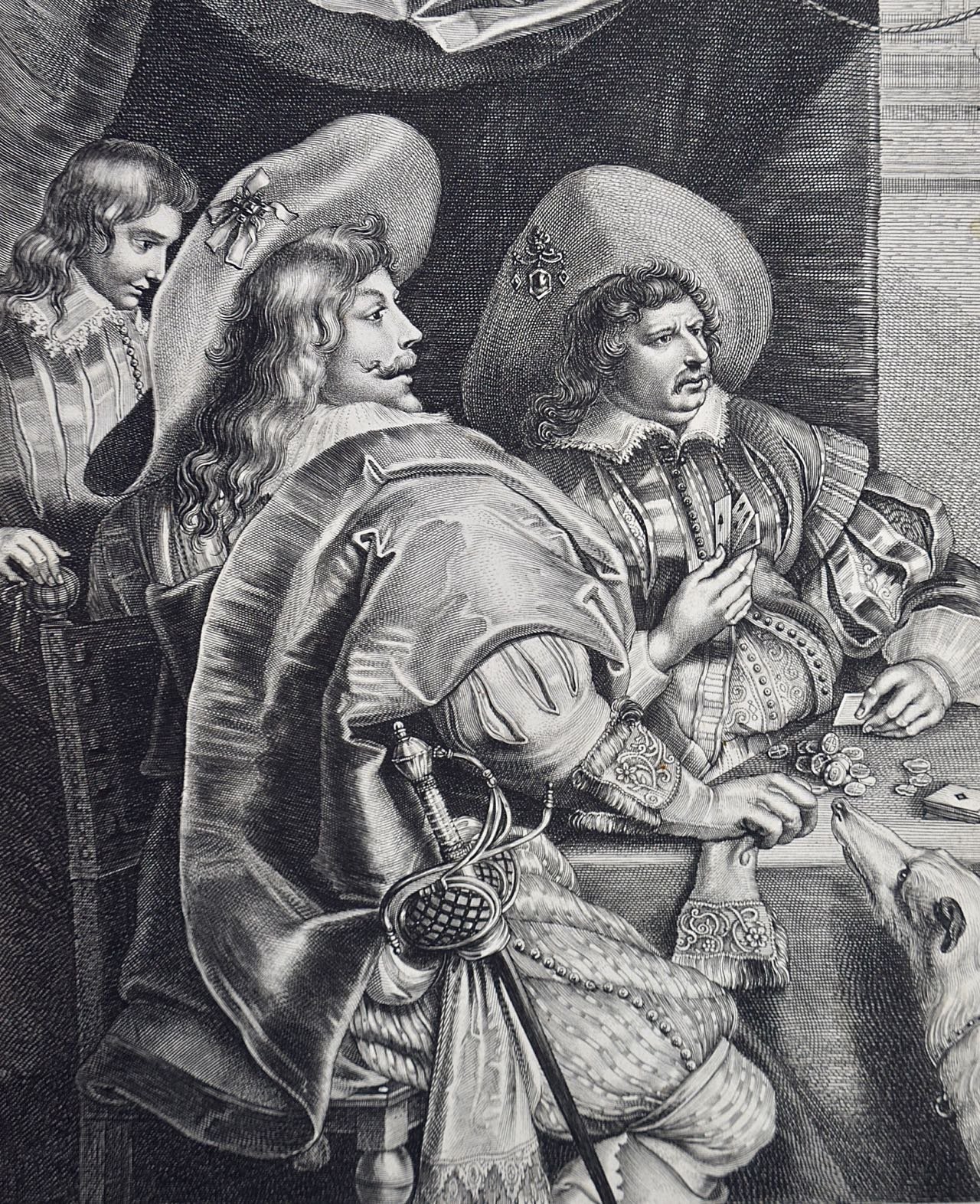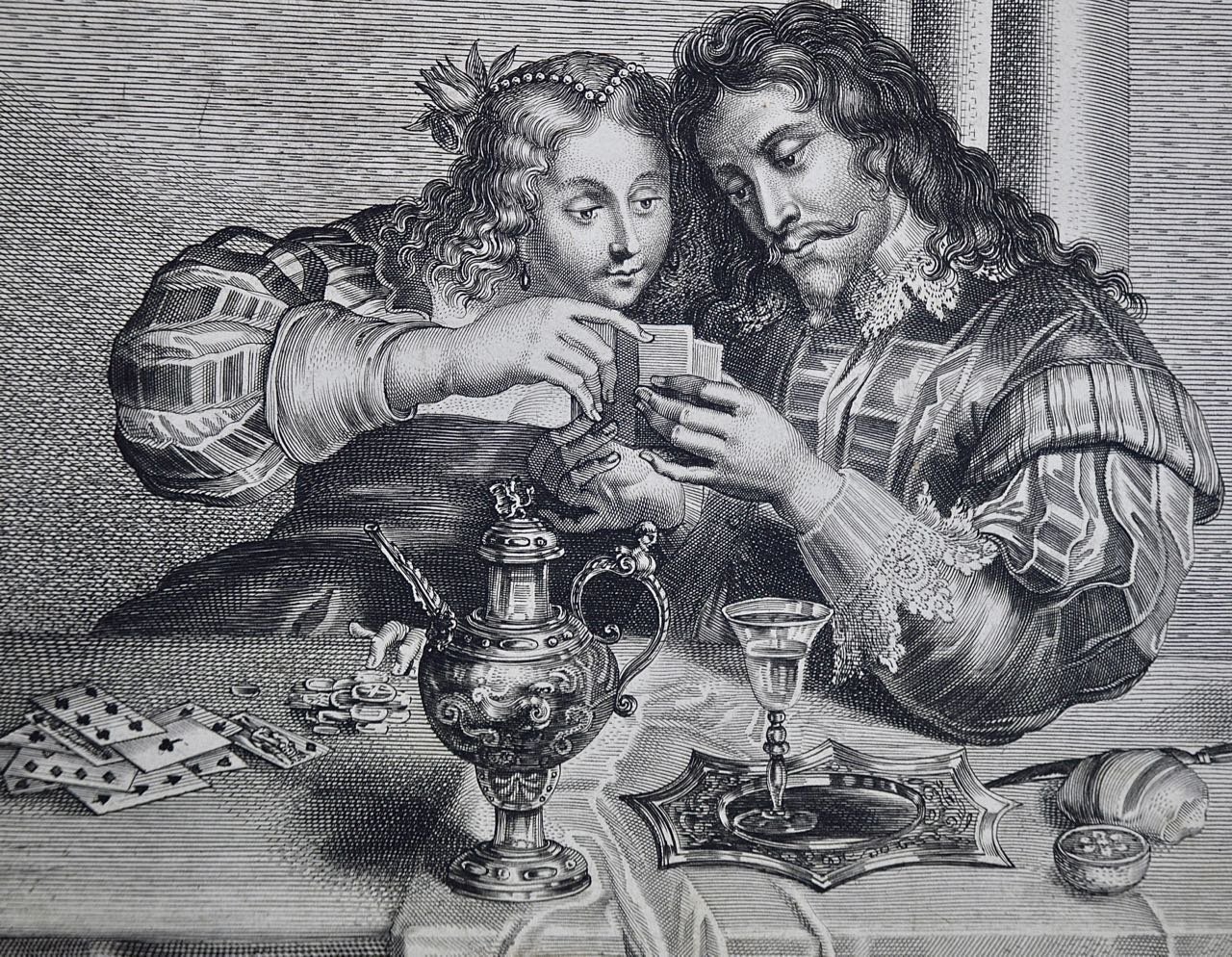This 18th century Piranesi etching is presented on an antiqued silver-colored wood frame with a light tan mat and a thin black inner mat trim. The frame measures 27" high, 32" wide and 1.5" deep. There is a vertical center fold, as issued. The print is in very good condition.
Santa Costanza is a 4th-century church in Rome, Italy, on the Via Nomentana, which runs north-east out of the city. One of the finest examples of early Christian art and architecture in Rome, the stunning 4th-century mausoleum of Santa Costanza offers a vivid insight into the Eternal City’s gradual transition from pagan antiquity to Christian capital beginning in the reign of the Emperor Constantine. The vaults of the circular mausoleum are covered with beautiful 4th-century mosaics that are both religious and secular, featuring doves, peacocks and creeping vines. A prominent feature of the structure are twelve pairs of ancient granite columns recycled from an earlier Roman structure. According to the traditional view, Santa Costanza was built under Constantine I as a mausoleum for his daughter Constantina and possibly a second daughter, Helena. It is a round building with well preserved original layout and mosaics. It has been built adjacent to a horseshoe-shaped church, now in ruins, which has been identified as the initial 4th-century cemeterial basilica of Saint Agnes. Santa Costanza and the old Saint Agnes were both constructed over the earlier catacombs in which Saint Agnes is believed to be buried.
This Piranesi etching is held by many museums, including; The Metropolitan Museum of Art, The British Museum, The Rijksmuseum, The Museum of Art at Yale and The Fine Arts Museums of San Francisco.
References: Wilton-Ely 1994 158, Hind 1922 37.III, Focillon 1918 811
Giovanni Battista Piranesi (1720–1778) was born in Venice in 1720 and died in Rome in 1778. He was the son of a stone mason and was trained as an architect. After a slow start to his career, he eventually achieved great success as an architect, archaeologist, artist, designer, collector, and antiquities dealer. His mission was to glorify the architecture of ancient Rome through his etchings. He began collecting, restoring and selling ancient architectural objects in the 1760's in partnership with Thomas Jenkins and Gavin Hamilton, who had financed numerous excavations in the Pantanello area of Hadrian’s Villa at Tivoli. In 1768 Piranesi began creating etchings depicting these objects. The plates were eventually published together as a set in 1778 in "Vasi, Candelabri, Cippi, Sarcofagi, Tripodi, Lucerne ed Ornamenti Antichi". Piranesi dedicated many of the plates to patrons, colleagues, good customers and influential people. Many of the antiquities shown in Vasi were eventually sold to King Gustav III of Sweden by Piranesi's son, Francesco Piranesi, after his father’s death, and now reside in the National Museum in Stockholm.
Piranesi's etchings were highly detailed and captured the grandeur of Rome's ancient ruins and architectural marvels. He used a combination of realism and imagination to create dramatic compositions that were both accurate and awe-inspiring. His highly dramatized prints often depict imaginary interiors and frequently include figures in mysterious activities, who are dwarfed by the magnitude of their monumental surroundings.
In addition to his art, Piranesi also designed buildings and interiors in Rome, including the Church of Santa Maria del Priorato and the Villa Adriana in Tivoli. He also wrote several books on archaeology and ancient art. He was also a collector of ancient architectural objects, restoring and often selling them to European tourists. Piranesi was knighted by the Pope in 1765 and he was elected a Fellow of the Society of Antiquaries in England in 1757. Piranesi's style greatly influenced the development of neoclassical art movement of the late 18th century and early 19th centuries. His dramatic scenes inspired generations of set designers, as well as artists, architects and writers. Piranesi died on November 9, 1778, in Rome, Italy, at the age of 58. He is remembered today as one of the greatest artists and architects of the 18th century, whose work continues to inspire and fascinate people around the world. His prints have continued to increase in value to institutions and collectors.

